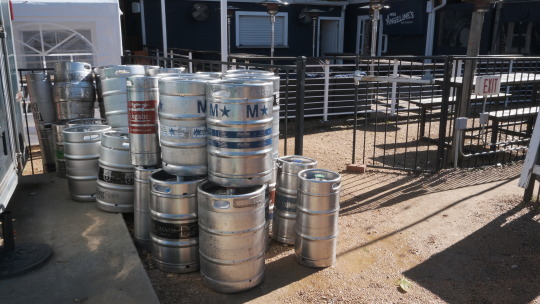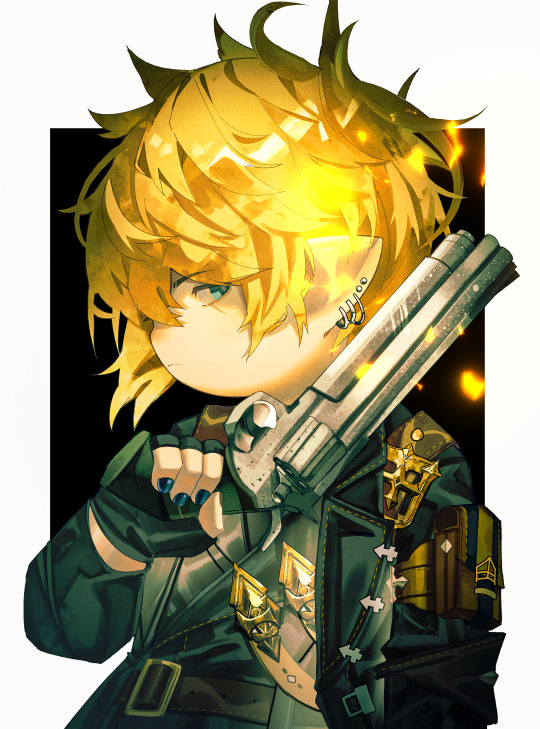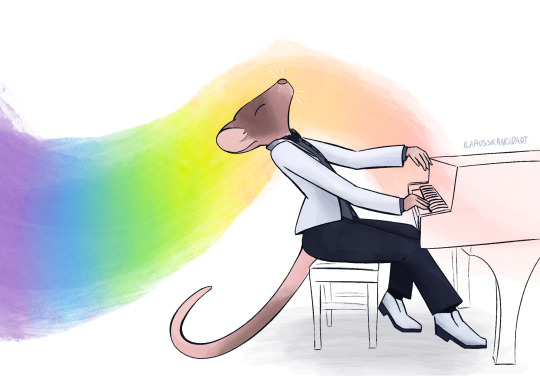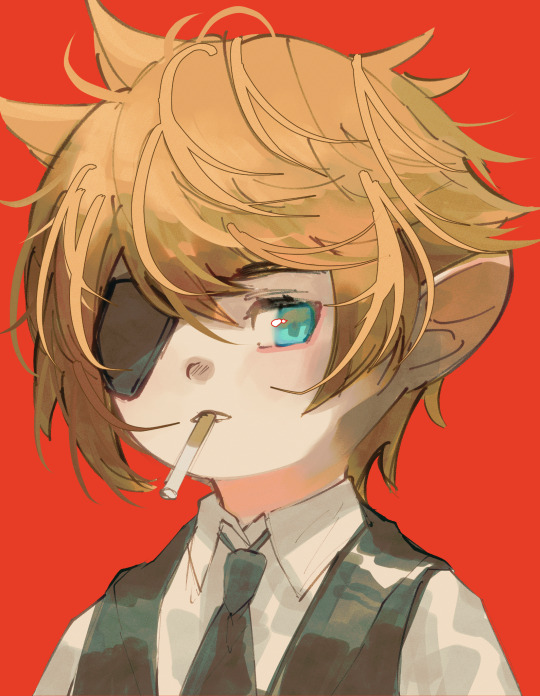Writing, Photography, Video games and other such subcultures
Don't wanna be here? Send us removal request.
Text
Existen fuerzas que nos acercan, que nos alejan, y si se enfrentan, ¿Cuál queda? - Pangea, Los Mesoneros
0 notes
Text
A review of Dragon's Dogma 2
Dragon’s Dogma 2 is one of the first major game releases in 2024. With some of the most fun gameplay an action RPG could have and a sense of exploration contrasting with a messy storyline. The game’s world design is more concerned with feeling like a place than being a playground for you to make a mess in.
In Dragon’s Dogma 2 you play as the Arisen, a chosen one of sorts whose heart was stolen and devoured by a dragon. Alongside your main character, you also have a Pawn; a sort of dimension-hopping helper that acts as your main companion in your party. The game fully allows you to customize both characters, including picking a Vocation (think classes), appearance, and in the case of your Pawn, a personality that determines how it will play alongside you. You can also recruit Pawns made by other players to make a party of 4, where they will contribute to your group using whatever personality they were assigned by their creators.
The game’s open world is one of the game’s strongest features, with two major countries to explore with different environments, caves, ruins and other unique landmarks. Exploration in and of itself is the core of how to interact with this game, as traveling around leads to discoveries of treasure, new monster encounters in unusual places, and in some cases new villages or quests of interest.
The combat is relatively simple, with every Vocation having a basic attack, two special attacks that are fixed to the vocation itself and four slots for you to pick special attacks that your vocation offers. With different spells for mages and wizards, uniquely strong physical strikes for fighters and warriors, special tricks for thieves, and similar fitting special attacks for other vocations. The game also features options like grabbing smaller, stunned enemies or grabbing onto larger enemies to climb on them and hit their weak spots.
In spite of its simplicity, or perhaps because of it, the combat in Dragon’s Dogma 2 is addictive. Every encounter with an enemy plays out differently depending on what approach you chose, with every option being simple enough in execution for it to be tempting. If you feel like fighting an ogre straight on or chose to run away, both are viable choices. If you want to throw a goblin at it because they happen to be around, it's a viable strategy (In fact, throwing things at enemies has really high knockdown values.) If you want to goad it into attacking you and falling off a cliff, just be sure not to join him on his way down.
The story of the game is admittedly a bit messy, with an introduction that sets up a plot of political intrigue and a race for the throne that gets lost somewhere on its way alongside the path to fight the dragon and reclaim your heart. There’s traces of good ideas very clearly visible through the plot, but unfortunately doesn’t utilize the setups it makes to their fullest potential. Without getting into spoilers, the endgame in particular throws a lot of things in the story off the rails in favor of something that doesn’t feel connected to most of the main story.
The characters you interact with are also simple. With key characters having relatively simple writing and, with a few exceptions, mostly serving as a means to give you quests and develop the story further. With that said, the characters are written well enough. Additionally, all NPCs exist under schedules, basic behaviors and dispositions that make the world feel like it is inhabited by a few different civilizations.
Which leads to the game’s secret, the strongest card it has to play. The world itself. Some quests are timed by in-game days, so they will end whether you interact with them or not. Larger roaming monsters like griffins and lesser drakes will go wherever they want, independently of you. The capital city of Vermund can be assailed by monsters while you’re strolling around it, NPCs can die from monster attacks. And yet, the game goes on. This world exists even when you’re not interacting with it directly.
This extends to NPCs interacting with the main story, too. For instance, Brant, the soldier who gives you most of the initial quests, can die in a monster attack. Restoring the thread of fate is not impossible, and can, in and of itself, be a source of adventure outside of the story and exploration itself. Whether this is a positive or a negative thing, however, depends on the player and their willingness to interact with the game on its own terms.
With its unique game world design, Dragon’s Dogma 2 overcomes most of its flaws by using design choices that make the world feel so alive that the experience of playing the game overwhelms its shortcomings. The sense of exploration, the thrill of combat and the ever-present feeling of being a part of a living world have captivated my attention thoroughly. And I can confidently give this game a highly positive endorsement.
9/10
*Note: PC version released with performance issues. While I did not account for them in this review. It’s a very important factor to mention. As of writing (28/3/2024), Capcom has expressed their intent on patching the game to address this. I wrote this under the assumption that they will go through with it and the game will have no performance hitches.
3 notes
·
View notes
Text
Death of the Authors.
A financially-driven extermination.
Recently in my sad, desperate search for stable income, a friend of a friend talked to me about a website. Due to potential legal concerns, I will not name the website, but the purpose of it was to hire writers to do small, quick reviews of texts, rewrites and other tasks to feed to an undisclosed AI so that it would train and improve.
Sounds simple enough, and I like simple! Not only that but once I registered and started the training, the very first video said that finishing training earns me one solid hundred dollars. Motivated by relatively simplistic tasks and allegedly paid training, I signed up and through the day I worked through all of the tests.
Turns out the tests were a bit more complex than expected. While I’m not at liberty to describe them in detail, they certainly required more nuanced reading than originally anticipated. Additionally, some of the more complicated tasks that I was tested on required research efforts and word counts worthy of short news reports. Not only that, once I finished training and got an approval email, I logged in and checked to see if I could register any tasks, and iI couldn’t work because there’s too many people working these tasks. So I trained for a job and then I couldn’t execute on it.
It dawned on me, then, that there are hundreds, if not thousands of people working on training AI via visual and writing works. It’s become so necessary it developed a job market in and of itself, and said job market instantly became oversaturated. Writers around the world are teaching their skills to computers for pennies on the hour.
And then you ask yourself, why would anyone do that? You’re giving weapons to your enemy. Even if AI is incapable of replacing writers due to the nature of communication as a form, it won’t stop bastards from trying. And even if it can’t replace the basic writing process, bastards will still try to cut other types of corners with it.
Writers of all kinds are currently facing a war where corporations will try their damndest to pay less for your efforts, be they fiction writing or otherwise. It’s always easier for CEOs or whatnot to chose to not hire new guys like me and instead opt to replace any input like that with something that doesn’t complain and, more importantly, doesn’t need to get paid
So I would like to encourage any writer out there of any kind who reads this to never contribute to AI. Its knowledge is limited to what it gets fed, with no thought or interpretation put into it. It’s memorization, and through that, the only kind of writing it can really produce is dry and limited. We can all do better than that by adding interpretation, experiences and personality to what we write.
… oh, and I never got my 100$ from training.
2 notes
·
View notes
Text









Some pictures I took at Low Tide City 2023
I need more practice at Event Photography but I thought I'd showcase these
4 notes
·
View notes
Text

Normally I'd upload a lot more pictures from my vacation but I focused more on people than stills like these. Still, this one I like a lot so I'll upload it
6 notes
·
View notes
Text





More photography I did today around the Town Square
4 notes
·
View notes
Text



Finally got a new camera (Fujifilm X-T30 II) and took some pics to try it out!
Need to get better at it after months of no practice but I absolutely love the look this camera can give!!
4 notes
·
View notes
Text
Majora’s Mask: The most creative Zelda Experience.
The argument for whether video games constitute an art form is full of compelling proof; games that have captivated the hearts of millions across the world over with their style, worldbuilding and gameplay.
The Legend of Zelda is a series of such games that has constantly made masterpiece after masterpiece, with worlds that constantly innovate in new forms of exploration and adventure.
Within this series of games, there is a constant debate about which game is truly the best in the series, with every new release outdoing the previous in one form or another. From the stylistic improvements of Wind Waker to the realistic physics of Breath of the Wild. While older releases like Ocarina of Time being credited for establishing the formula for the games to follow.
Majora's Mask is the direct sequel to Ocarina of Time, released two years after its predecessor. The game’s development was well known to be a conflict of ideas between multiple directors, with Shigeru Miyamoto, a key director at Nintendo, wanting to release Ocarina of Time again with added difficulty (Later released as Master Quest) and Ocarina’s Dungeon Designer Eiji Aonuma really, really wanting to do something else, something new.
This new game, under the constraints of limited development time, mastered worldbuilding in a very unique form: The experiences of people in a small region as they face the possibility of the end of the world. With the adjacent regions facing their own crisis each, desperate to solve problems that could end the lives of the settlements.
This is what’s so fascinating about the game: It captures three days within a world on the brink of ruin, it shows populations torn between their fears and their personal needs or wants. It also allows for a more personal approach to the different cultures of the Zelda universe, by allowing you, through transformations, to engage directly with different civilizations, which is something no other Zelda game has really touched upon before or since.
From the populace of Clock Town being split between people who want to take shelter away from the moon and those who, due to duty or love, would rather stay in town and risk their lives. To the Southern Swamp where the Deku Kingdom is prepared to render judgment into an innocent due to the misunderstood actions of them. The northern mountains of Snowhead, where the Goron village, deprived of its hero, scurries before the impending embrace of a cold death. The western Great Bay region, where the waters are contaminated while the Zoras lose their methods to resolve the curse. And finally to the neighboring kingdom of Ikana, cursed life past death, as ghosts of the past are unable to let go of the mistakes they made in life, continuing to exist with only feelings of violence and regret in their souls.
All of these locations are explorable in gameplay, and also in interactions for sidequests. With small favors ranging from toilet paper (Yes, really) to real estate business deals, to the notoriously famous Anju and Kafei sidequest, which might as well be a full fledged story of its own, centered around two lovers and how a series of unfortunate events have completely stopped their marriage plans, and you have the option to successfully reunite the lovers together.
Interestingly, if you leave the quest incomplete at certain parts, the characters will react appropriately, such as Anju not being there for Kafei if you don't hand her the pendant, or her waiting to die alone if Kafei doesn’t recover the mask, making the full completion of this quest a long endeavor with a considerable amount of detail and moving parts.
While the game certainly isn’t the peak of what it tries to do, it's a really wonderful initial exploration of a living world in a video game, with the 3 day loop covering a lot of actions and reactions while not having to over-extend itself into a “completed” state where, after doing a sidequest, a character just exists, forever thanking you for whatever favor you’ve done. Instead the loop kicks in, removing your efforts from time and setting it all in motion from the beginning.
Majora's Mask is now remembered as a weird entry in Zelda, one that approaches darker themes of endings and widespread panic, a short and condensed experience that shows you a small world and the experiences of its inhabitants when their civilizations are on the verge of collapse. It is, in my opinion, the best Zelda experience to date.
5 notes
·
View notes
Text
Parting gift
When I last saw you, you couldn't stop crying.
You faced your fears and told me everything you never could before
How much I meant to you, the things we couldn't do before I left.
As a parting gift, you handed me a rose.
Even now, past life and infinity, I treasure it fondly.
1 note
·
View note
Text



Had an accident and my camera got a bit damaged but I took these before
1 note
·
View note
Text



Some quick pics I took while vacationing in FL for the holidays
2 notes
·
View notes







